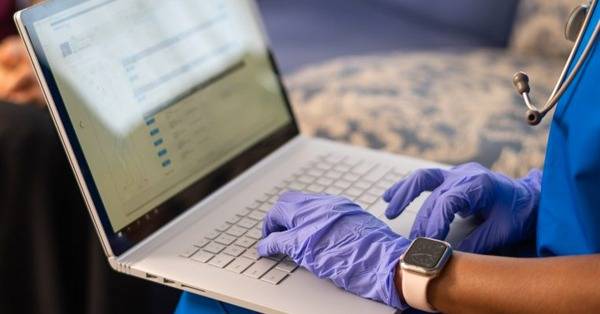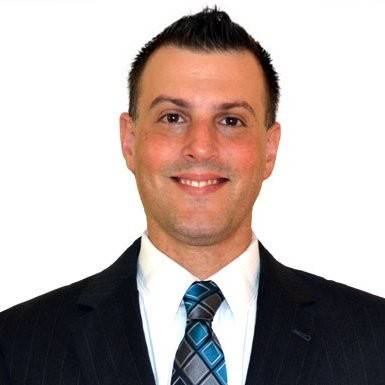- Solutions
- Solutions
- Home Health
- Hospice
- Life Plan Community
- Palliative Care
- Private Duty
- Senior Living
- Skilled Nursing
- Skilled Nursing
- Skilled Nursing Software
- Advanced Insights
- Customer relationship management
- Data and analytics
- Financial & operations management
- Marketing
- Nutrition management
- Referral management
- Regulatory compliance
- Retail management
- Resident engagement
- Revenue cycle management
- Skilled nursing interoperability
- Partners
- Blogs
- Resources
- About
- User Conference

3 ways to improve staff retention & recruitment with EHR training
At a time when many skilled nursing, life plan communities, and senior living providers are struggling with workforce issues, the ability to retain and recruit staff is a top-of-mind goal. The good news is that improving their EHR training and staff development programs offers a powerful way to do just that.
3 ways EHR training can boost staff retention & recruitment efforts
How does revising EHR training and development help boost employee recruitment and retention efforts? The idea is that focusing on the workers you have today helps you keep them tomorrow. That’s true with any business, or course. But it’s especially impactful in healthcare, where job seekers now have an entire market full of new career opportunities waiting for them.
In addition to the difficulty of finding new workers in the current moment, recruiting and hiring also come with high price tags, which can negatively impact profitability. Data shows that the average cost of nurse turnover is $46,100 per RN, and the average recruitment time is 87 days per nurse — or about three months — regardless of their specialty.
Turnover among nursing staff is even more disruptive to nursing and senior living communities that rely on nursing aides. The American Hospital Association (AHA) cites data showing a 27.7% turnover rate for CNAs, which is nearly double the rates for licensed or registered nurses.
From a financial perspective, the need for improved retention is clear enough. With today’s hyper-competitive labor market, so is the benefit of having another way to appeal to new hires. And a renewed focus on EHR training gives organizations a few good ways to meet both of these important goals.
#1: A new way to engage workers
Better EHR training can help curb turnover and improve retention by getting workers more invested and engaged with a facility’s system and processes. It can help them accept the use of new technology they may resist at first, and even get them excited about it. For example, helpful tools like pre-built documents or dashboards actually save them time and help make their day-to-day routines simpler and less stressful.
After all, the better workers understand how to use the tools they’re provided, the more efficient and successful an organization will be in general. And that not only helps boost job satisfaction, but it can also help them achieve better outcomes to drive profitability.
#2: A new recruitment incentive for new hires
An up-to-date EHR training program can be a helpful tool for recruiting new staff, too. By offering them a means to develop valuable skills that will serve them throughout their career, organizations that emphasize the quality of their EHR training programs gain a new type of incentive for attracting motivated nurses and clinicians.
In addition, focusing on EHR training also helps reassure potential hires that the skills they’ve already developed won’t go to waste, and reduces their hesitation to learn a new system. If candidates are familiar with a different EHR, for instance, recruiters can pitch an organization’s focus on training as a way to build on that knowledge instead of replacing it, which can help ease anxieties over having to start all over again with a new system.
#3: A means to engage with local communities
Organizations that really embrace the possibilities of technology-enabled staff training and development can take it one step further for even greater impact — by setting up their EHR as a training tool in their local nursing schools, trade schools, colleges, staffing agencies or other partner connections, for instance, or in the CNA certifications that facilities sometimes offer within their communities.
These kind of early training programs help eliminate a common source of turnover by helping to guarantee comfort with an organization’s EHR system among local hires. It’s a win-win for everyone involved. The institution gets a real-world training tool. Students learn valuable skills. And facilities build early relationships with nurses and clinicians, while helping to ensure a higher level of competence among new hires.
Integrating EHR technology with healthcare staff training
The good news is that today’s technology has made implementing an effective, up-to-date EHR training program a realistic goal for any type of healthcare facility or operator. With the right partner, the same systems already used by most organizations can serve as the basis for a new, more engaging, more proactive type of EHR training and staff development program.
It’s true that implementing a new program may require some additional investment. And facilities may need to allocate new hours to ensure that a dedicated staff member is available to oversee the program. But doing so can yield significant rewards, like improving recruitment, retention and, ultimately, an organization’s ability to ensure continued profitability.
How MatrixCare can help
At MatrixCare, we understand the value of working one-on-one with each customer to help them adopt an EHR that best meets their specific needs. And we believe that an ongoing training plan is the best way to ensure a continuously successful relationship, and to help drive the culture change needed to mindfully adapt technology on a day-to-day basis.
See how your organization can promote efficiency and staff retention by making onboarding easier and more intuitive than ever.
See what MatrixCare can do for you
Kim Broyer
Kim Broyer is the Vice President of Professional Services at MatrixCare. She has almost 20 years of experience in long-term care and holds a Bachelor's degree in Healthcare Administration from the University of Wisconsin - Eau Claire. She has been in various roles at MatrixCare since January 2003 including Training Consultant, Product Manager/Business Analyst and current role for 6 years leading up Project Management and Training services for our customers. Broyer's team helps to ensure new clients are implementing MatrixCare successfully and existing clients continue to adopt new product features through project management, eLearning, ongoing training webinars and #Engage regional user groups.
Related Posts



See MatrixCare in action
Start by having a call with one of our experts to see our platform in action.
MatrixCare offers industry-leading software solutions. Thousands of facility-based and home-based care organizations trust us to help them improve efficiency and provide exceptional care.
© 2025 MatrixCare is a registered trademark of MatrixCare. All rights reserved.





